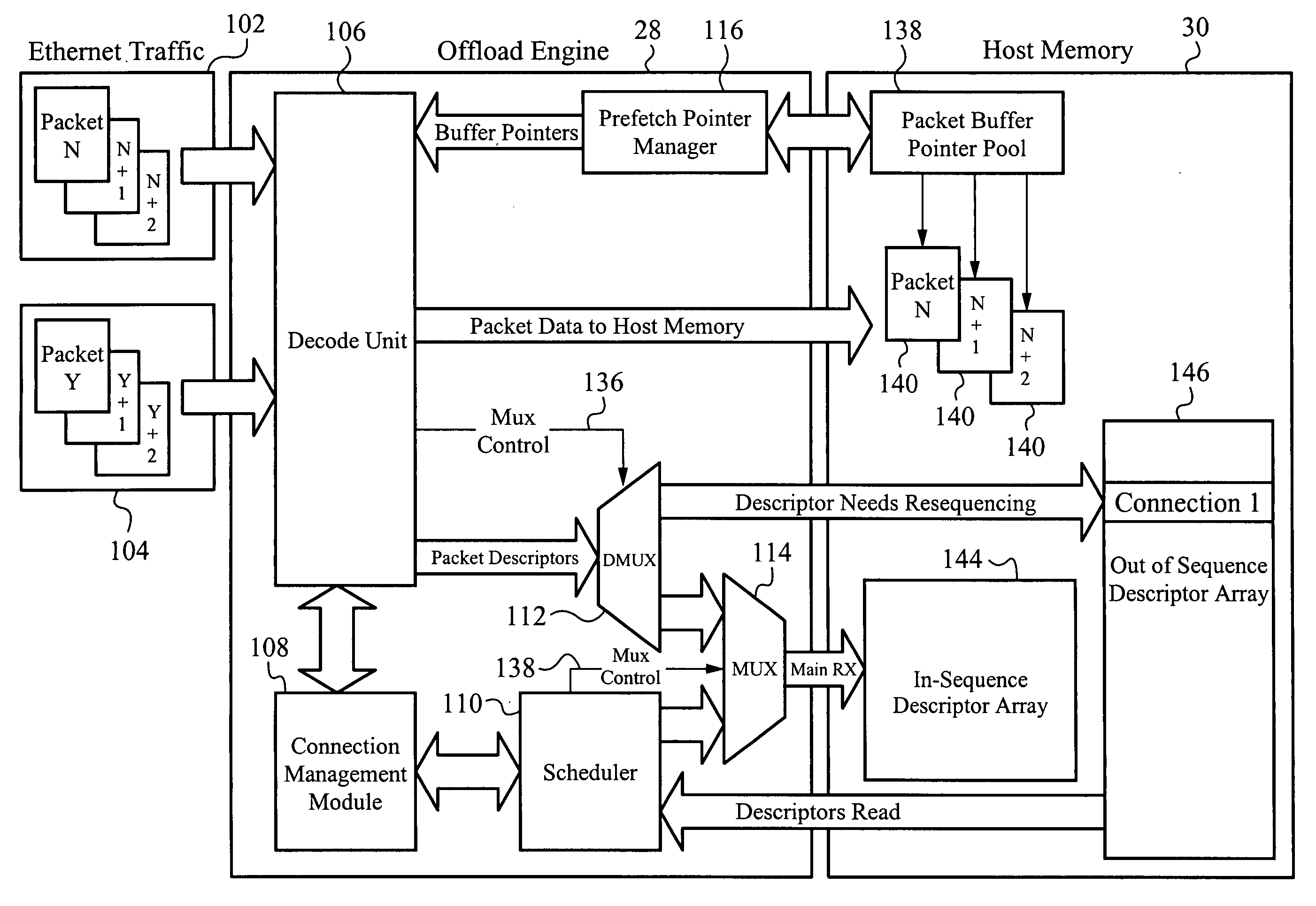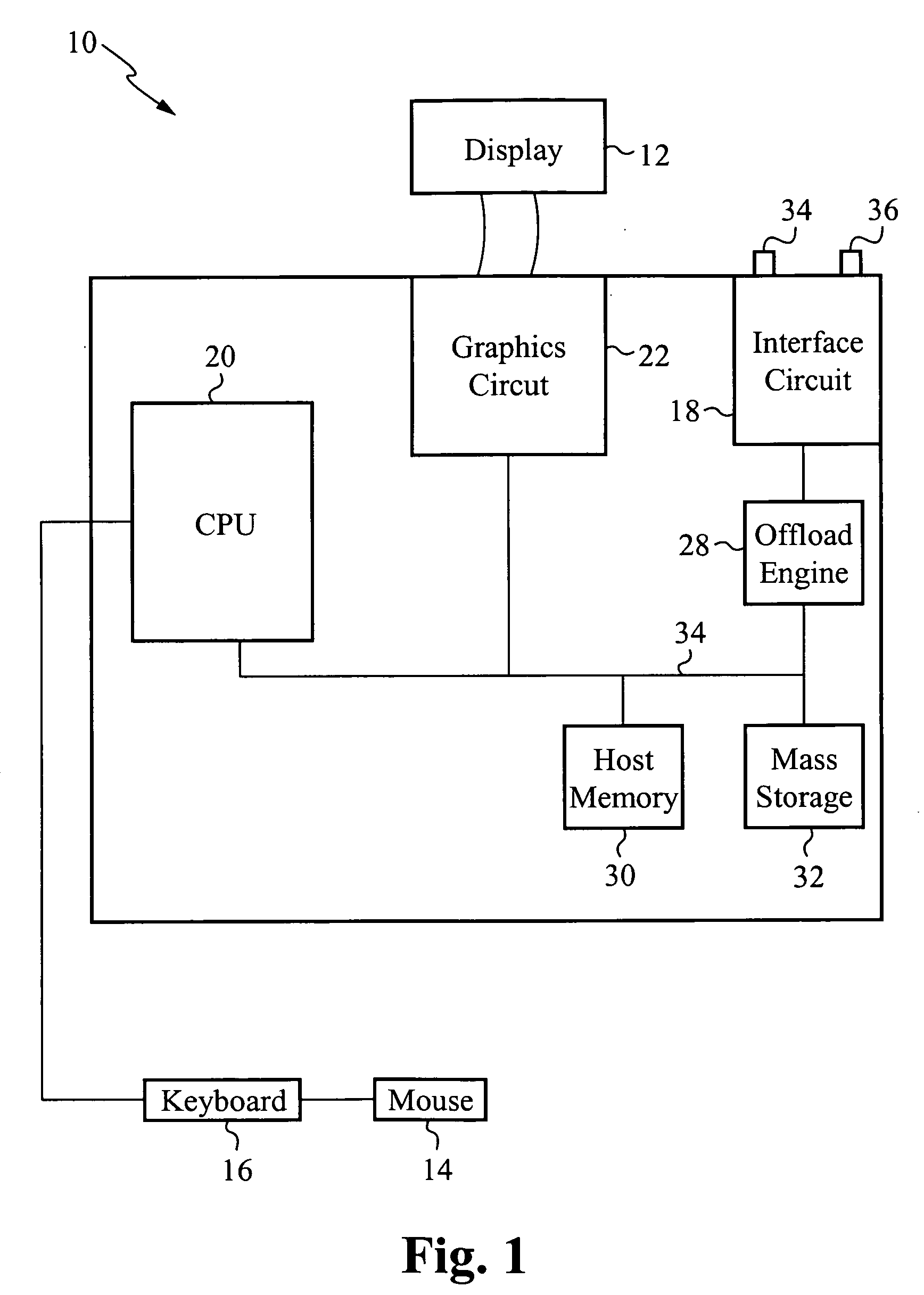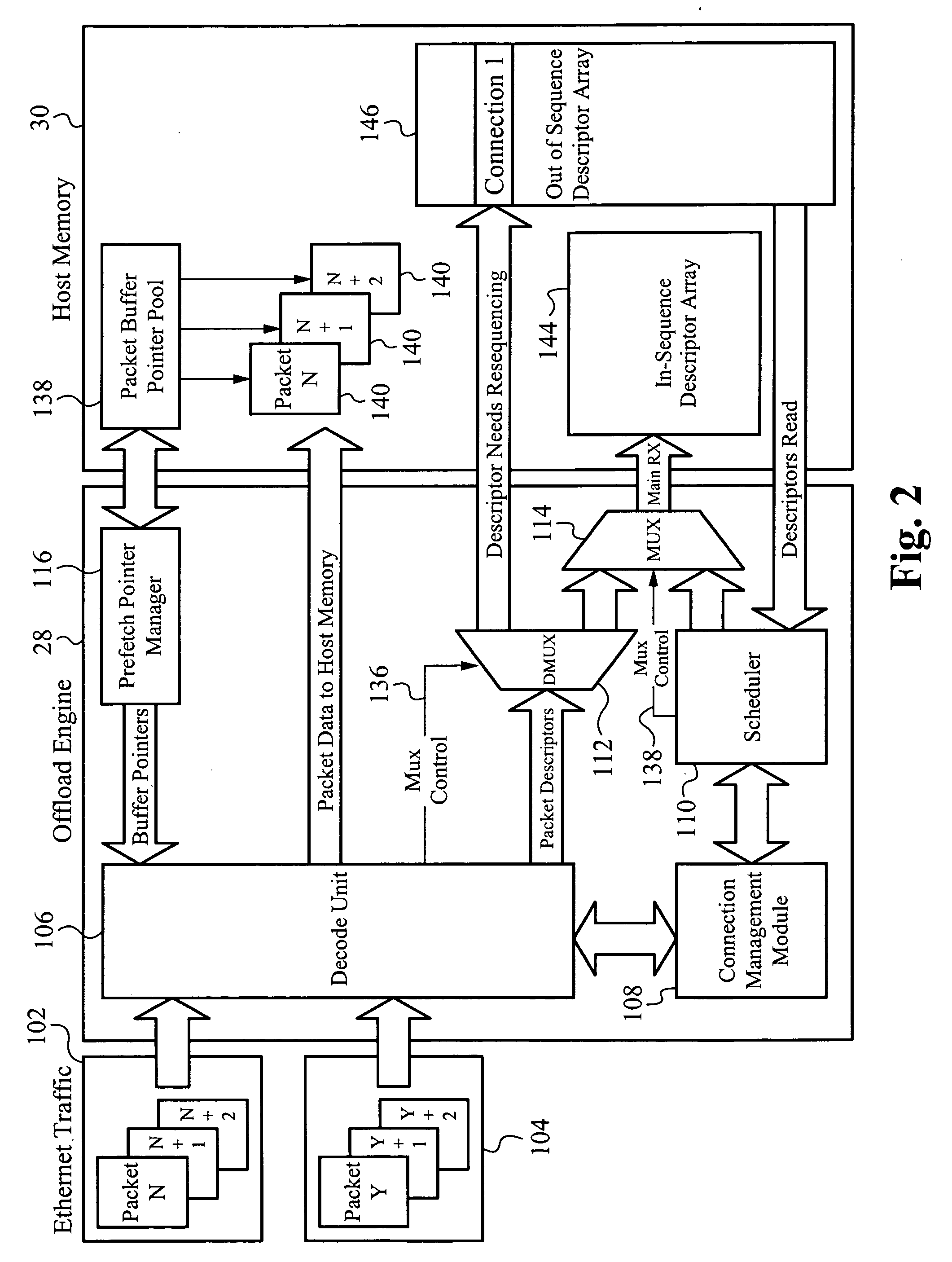Off-load engine to re-sequence data packets within host memory
a data stream and host memory technology, applied in the field of data transmission, can solve the problems of reducing throughput, requiring a complex and expensive tcp offload engine chip, and limited processing for other applications running on the system
- Summary
- Abstract
- Description
- Claims
- Application Information
AI Technical Summary
Benefits of technology
Problems solved by technology
Method used
Image
Examples
Embodiment Construction
[0012]FIG. 1 illustrates a block diagram of the internal components of an exemplary computing device 10 implementing the re-sequencing system of the present invention. The computing device 10 includes a central processor unit (CPU) 20, an offload engine 28, a host memory 30, a video memory 22, a mass storage device 32, and an interface circuit 18, all coupled together by a conventional bidirectional system bus 34. The interface circuit 18 preferably includes a physical interface circuit for sending and receiving communications over an ethernet network. Alternatively, the interface circuit 18 is configured for sending and receiving communications over any packet based network. In the preferred embodiment of the present invention, the interface circuit 18 is implemented on an ethernet interface card within the computing device 10. However, it should be apparent to those skilled in the art that the interface circuit 18 can be implemented within the computing device 10 in any other appr...
PUM
 Login to View More
Login to View More Abstract
Description
Claims
Application Information
 Login to View More
Login to View More - R&D
- Intellectual Property
- Life Sciences
- Materials
- Tech Scout
- Unparalleled Data Quality
- Higher Quality Content
- 60% Fewer Hallucinations
Browse by: Latest US Patents, China's latest patents, Technical Efficacy Thesaurus, Application Domain, Technology Topic, Popular Technical Reports.
© 2025 PatSnap. All rights reserved.Legal|Privacy policy|Modern Slavery Act Transparency Statement|Sitemap|About US| Contact US: help@patsnap.com



